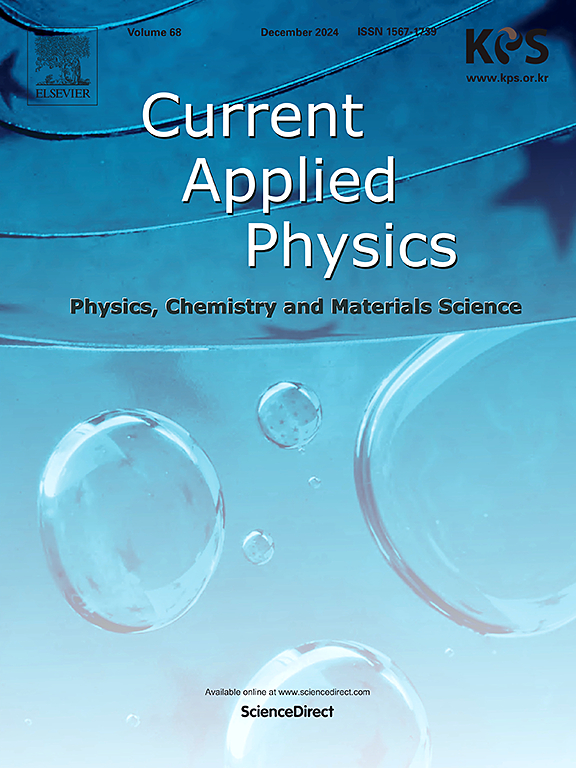Enhanced energy storage performance of lead-free bismuth ferrite-strontium titanate multilayers via polarization spiral structures
IF 2.4
4区 物理与天体物理
Q3 MATERIALS SCIENCE, MULTIDISCIPLINARY
引用次数: 0
Abstract
The quest for environmentally friendly lead-free dielectrics with exceptional energy storage performance poses a significant challenge. Here, we propose an alternative approach through a rational design of lead-free ferroelectric/paraelectric (BiFeO3/SrTiO3) multilayers. Utilizing the phase-field model, we demonstrate that the energy storage density and charge–discharge efficiency can be optimized by adjusting the volume fractions of BiFeO3. A volume fraction of 0.69 BiFeO3 yields the highest discharge energy storage density (58.01 J/cm3) and near-perfect charge-discharge efficiency (99.8%) at 4 MV/cm. The multilayers exhibit varying hysteresis behaviors, from ferroelectric to relaxor to paraelectric-like characteristics, depending on the BiFeO3 ratio. This study reveals that different polarization domain structures correspond to these behaviors, transitioning from stripe to spiral to in-plane patterns as the ferroelectric volume is reduced. Notably, the polarization spiral structure maintains excellent energy storage across temperatures up to 550 ∘C. These insights are crucial for developing high-performance dielectrics for electrical energy storage.

利用极化螺旋结构增强无铅铁酸铋-钛酸锶多层膜的储能性能
寻求具有卓越储能性能的环保无铅电介质是一项重大挑战。在这里,我们提出了一种替代方法,通过合理设计无铅铁电/准电(BiFeO3/SrTiO3)多层材料。利用相场模型,我们证明了通过调整BiFeO3的体积分数可以优化储能密度和充放电效率。当BiFeO3体积分数为0.69时,在4 MV/cm下的放电储能密度达到58.01 J/cm3,充放电效率达到99.8%。根据BiFeO3的比例,多层材料表现出不同的磁滞特性,从铁电特性到弛豫特性再到类准电特性。研究表明,不同的极化畴结构对应于这些行为,随着铁电体积的减小,从条纹到螺旋再到面内模式转变。值得注意的是,极化螺旋结构在550°C的高温下仍能保持出色的能量储存能力。这些见解对于开发用于电能存储的高性能电介质至关重要。
本文章由计算机程序翻译,如有差异,请以英文原文为准。
求助全文
约1分钟内获得全文
求助全文
来源期刊

Current Applied Physics
物理-材料科学:综合
CiteScore
4.80
自引率
0.00%
发文量
213
审稿时长
33 days
期刊介绍:
Current Applied Physics (Curr. Appl. Phys.) is a monthly published international journal covering all the fields of applied science investigating the physics of the advanced materials for future applications.
Other areas covered: Experimental and theoretical aspects of advanced materials and devices dealing with synthesis or structural chemistry, physical and electronic properties, photonics, engineering applications, and uniquely pertinent measurement or analytical techniques.
Current Applied Physics, published since 2001, covers physics, chemistry and materials science, including bio-materials, with their engineering aspects. It is a truly interdisciplinary journal opening a forum for scientists of all related fields, a unique point of the journal discriminating it from other worldwide and/or Pacific Rim applied physics journals.
Regular research papers, letters and review articles with contents meeting the scope of the journal will be considered for publication after peer review.
The Journal is owned by the Korean Physical Society.
 求助内容:
求助内容: 应助结果提醒方式:
应助结果提醒方式:


